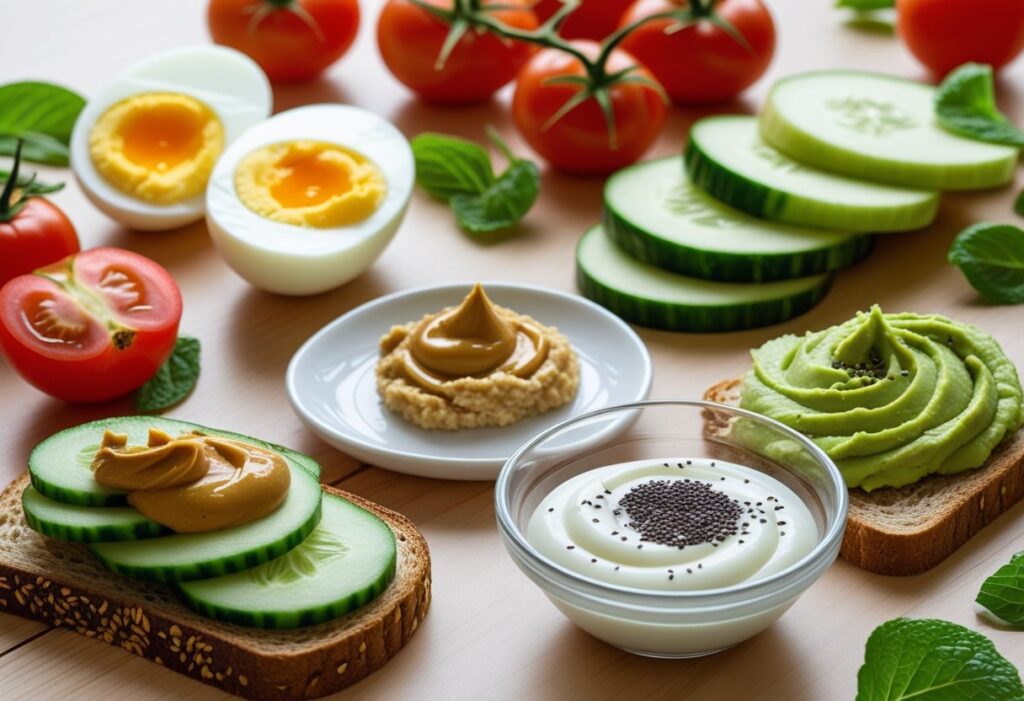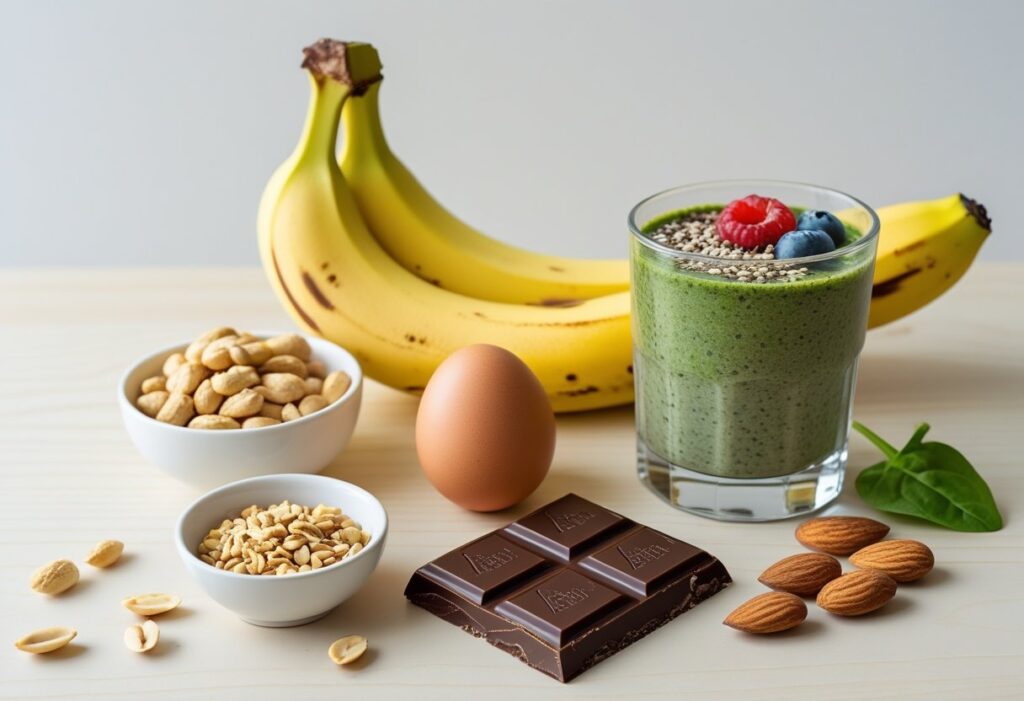Living with diabetes doesn’t mean giving up on snacks—it means choosing the right ones. As a licensed pharmacist, I’ve counseled hundreds of patients struggling with blood sugar spikes, cravings, and confusion over what’s “safe” to eat between meals. The truth is, snacking can be a strategic part of diabetes management—if done correctly.
In this guide, we’ll explore a wide range of diabetes-friendly snacks that are sugar-friendly, nutrient-rich, and satisfying. Whether you have Type 1, Type 2, or are prediabetic, you’ll learn how to choose the best options to keep your energy stable and your blood glucose in check.
Medical Disclaimer: This article is for informational purposes only. Always consult your healthcare provider or registered dietitian before making dietary changes.
Key Takeaways
- Diabetes-friendly snacks should be low in sugar, rich in fiber, and include healthy fats or protein.
- Smart snacking helps prevent blood sugar spikes, reduce hunger, and improve overall energy.
- Both homemade and store-bought options can be safe if chosen carefully.
- Always check labels and monitor how different foods affect your blood glucose.
- Talk to your doctor or dietitian before making major dietary changes.
What Makes a Snack Diabetes-Friendly?
A diabetes-friendly snack is one that provides steady energy without causing blood sugar spikes. It typically includes a balance of fiber, protein, and healthy fats, while being low in added sugars and refined carbohydrates.
The Ideal Snack Should:
- Have under 15–20 grams of carbohydrates (ADA recommendation)
- Contain 3–5 grams of fiber for better glucose control
- Include protein or healthy fats to slow down digestion
- Be minimally processed and low in added sugars
According to the American Diabetes Association, snacks with high glycemic indexes can rapidly increase blood glucose, while low-GI options help maintain steady levels.
Key Nutrients to Look for in Snacks
Top 25 Diabetes-Friendly Snack Ideas
Here’s a pharmacist-recommended list of snacks that are both nutrient-rich and glucose-friendly:
Whole Food Snacks

- Hard-boiled egg with cherry tomatoes
- Apple slices with peanut butter (1 tbsp max)
- Cucumber rounds with hummus
- Avocado mash on whole grain toast (half slice)
- Greek yogurt (unsweetened) with chia seeds
High-Protein Options
- Handful of mixed nuts (unsalted)
- Roasted chickpeas
- Turkey or chicken breast roll-ups
- Low-fat cottage cheese with flaxseeds
- Edamame (steamed)
Low-Glycemic Fruits
- Blueberries or strawberries (½ cup)
- Guava slices with chili-lime seasoning
- Pear slices with ricotta
- Pomegranate seeds (¼ cup)
- Kiwi or orange in small amounts
Crunchy, Savory Snacks
- Air-popped popcorn (3 cups)
- Whole grain crackers with cheese (look for <15g carbs per serving)
- Seaweed snacks
- Veggie sticks with tzatziki dip
- Baked kale chips
Easy Grab-and-Go Ideas

- Protein bar (check for <5g sugar)
- Plain roasted peanuts
- 1 boiled egg with a small banana (if active)
- Low-carb smoothie (spinach + almond milk + chia + berries)
- Sugar-free dark chocolate square + almonds
Tip: Always read nutrition labels. Watch for hidden sugars and trans fats.
Best Store-Bought Snacks for Diabetics
Recommended Brands:
- Kind® Nut Bars – Low glycemic, high fiber
- Hippeas® Chickpea Puffs – High in fiber, gluten-free
- Halo Top® Protein Ice Cream (small portion) – Low sugar alternative
- Good Culture® Cottage Cheese Cups – Protein-packed
- Whisps® Cheese Crisps – Crunchy, high protein, zero carbs
Look for snacks with:
- ≤15g net carbs
- ≥3g fiber
- Low sodium
- No added sugars
Smart Snacking Tips: Dos and Don’ts
DO:
- Choose snacks with a balance of carbs, protein, and fat
- Portion out your snacks in advance to avoid overeating
- Eat mindfully—don’t snack out of boredom
- Keep healthy snacks visible and accessible
DON’T:
- Eat high-carb snacks on an empty stomach
- Skip meals and rely on snacking alone
- Choose “sugar-free” snacks without checking the ingredient list
- Drink sugary beverages or fruit juices with snacks
Best Snack Times for Blood Sugar Control
Ideal Times to Snack:
- Mid-morning (2–3 hours after breakfast)
- Mid-afternoon (2–3 hours after lunch)
- Before bedtime (if you experience nighttime hypoglycemia)
Patients who take insulin or have reactive hypoglycemia may benefit from a light bedtime snack to avoid overnight sugar drops.
FAQs
Can diabetics eat fruit as a snack?
Yes, but choose low-glycemic fruits like berries, guava, or pears, and always pair them with protein or fat to avoid glucose spikes.
Are protein bars safe for diabetics?
Some are, but you must check the label. Choose bars with <15g net carbs, high fiber, and low added sugar.
How often should a diabetic snack?
This depends on your medication and meal routine. Most people do well with 1–2 snacks per day, especially between meals or before bed if needed.
Is popcorn a good snack for diabetes?
Air-popped popcorn can be a great option in moderation (3 cups = ~15g carbs). Avoid buttered or flavored types.
Can I snack at night if I have diabetes?
Yes, especially if you’re prone to nighttime hypoglycemia. Choose something light and balanced like Greek yogurt or a boiled egg.
Final Note
As a pharmacist, I’ve seen how empowering proper nutrition can be for managing diabetes. Snacks aren’t the enemy—they can be allies in your journey toward better blood sugar control and long-term health. Be mindful, plan ahead, and never hesitate to reach out to a healthcare professional for guidance.




Pingback: Snacks for Diabetic Patients: Healthy and Satisfying Options for Blood Sugar Control - Pharma Heals